
Review Article
Austin J Vet Sci & Anim Husb. 2024; 11(1): 1137.
Sero-Prevalence and Risk Factor of Abortion in Goats Near Coal Power Plant District Sahiwal Punjab
Sameen Ahmad; Hasan Riaz*; Abrar Hussain
Comsats University Sahiwal Campus, Pakistan
*Corresponding author: Hasan Riaz Comsats University Sahiwal Campus, Pakistan. Tel: 03367684759 Email: sameenahmad@gmail.com; Vethasan@gmail.com
Received: December 26, 2023 Accepted: February 02, 2024 Published: February 08, 2024
Review
This case study was conducted to determine the Serp-prevalence of Coxiella Burnetii and Brucellsis in goats and their association in public health. The purpose of this study is to determine the prevalence of Brucellosis and Q-fever within local goat population of Sahiwal District. A total of 50 samples were collected from two villages near coal power plant village 54/G.D and 59/G.D each villages respectively. Goat serum samples were collected and comprised of workers and owners. The results indicated that overall sero-prevalence of C.burnetii and brucellosis was 219.7 %( P<0.05) and 7.4% (P<0.05), respectively. The univerable logistic regression model detected the age (12-36 months, 69%, (P<0.0001), pregnancy status (non-pregancy status (non-pregnant) goats (P<0.003) and mixed herd goats raised with sheep, (P<0.02) were significant risk factors for C. burnetii sero-prevalence.
Caprine brucellosis is a disease that is recognized by failure in reproduction. In females, it causes abortion at the last trimester and therefore, affects high economic loss to any herd (Saleem et al., 2010). Brucella abortus is a gram-negative in the family brucellaceae and is one of the causative agents of brucellosis [6]. In Pakistan, seroprevelance of brucellosis varies from 1-32.5% among different livestock farms (Asif et al., 2009). Overall, seroprevalence of brucellosis is 3.25–4.4% in livestock species [6]. Seroprevalence of brucellosis at government Angora Farm and Livestock Experimental Station (LES) was 7.33% and 6.06% [4]. Coxiella burnetii is a gram-negative and obligate intracellular bacteria that causes Coxiellosis [7]. The infected goats show symptoms such as arthritis, fever and genital problems (Saglam and Sahin., 2016). The first report on this disease was reported in 2016 in which first evidence of Q-fever was reported in goats (17.9%) and sheep (16.4%) by using soil DNA in different Districts of Punjab [9]. Another study of Q-fever reported around 30% prevalence among different goats population in Layyah and Muzaffargarh Districts of Punjab. In females, higher value was documented 32% whereas, among males it was recorded as 21.7% [8]. There is lack of diagnostic assistance in Pakistan as a result, most of the Q-fever cases are not diagnosed and reported [9]. As reported by [9] the seroprevalence of Coxiella in Sahiwal is on third (4.6%) among other Districts of Punjab. Therefore, prevalence of Q-fever in this area by using ELISA that was helpful in estimating its prevalence in current times. Further serological studies on Government livestock farms showed around 15% prevalence in both sheep and goats which was further validated by a molecular investigation in a separate study [7].
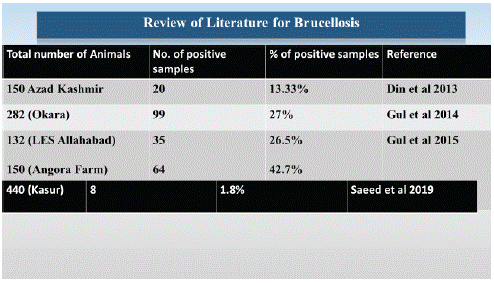
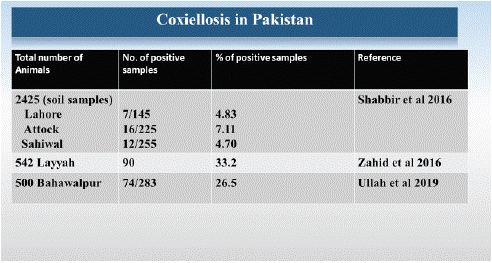
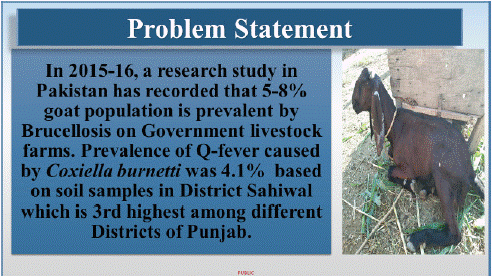
It has been before reported by Syed Muhammad Abubakar Published December 15, 2019 in Dawn newspaper under the article name Life under the shadow of a coal-fired power plant. The Sahiwal Coal Power Project changed heartland of Punjab and the lives of both animals and human being those living around it. The residents of village 54/G.D and 59/G.D reported different health issues such as fever and cough and abortions in their goats. The villagers have reported that toxic and harmful gases are emitted and released from the coal power plant. The toxic gases are released into air and spread nearby plant fields which are eaten by goats. Goats ingest these plants and eating such toxic heavy injurious polluted plants causes abortion goats by both eating damaged plants and inhaling harmful polluted air. The air quality also declined heavily making life miserable for both animal goats and human beings living their health condition is getting worse day by day. The coal power plant stands in the middle of Sahiwal's agricultural land. Sahiwal had been given priority due to the quality of animals both buffaloes, goat and dairy products. The dairy products are exported all round world. A medical camp was set up in the region in October this year. The doctors at the camp report a significant increase in people suffering from breathing problems. Dr Abdul Rauf, a senior doctor working in Lahore, confirms that coal-fired power plants can lead to lung diseases, especially asthma, pneumonitis (inflammation of lung tissue) and Chronic Obstructive Pulmonary Disease (COPD). “The poisonous fumes and particulate matter emitted from a coal power plant can cause different skin diseases, photosensitivity and allergic reaction to the face,” he adds. Communities living near the Sahiwal coal-fired power plant should be relocated, he believes. “Higher pollution levels will reduce the amount of oxygen in the local environment and reduce oxygen supply to the brain,” he says. “It’s actually slow poisoning.” The adviser to the prime minister on climate change, Malik Amin Aslam, terms the construction of the Sahiwal coal-fired power in the agricultural heartland of Punjab as “criminal neglect. This not only affects the agricultural lands around the project,” he says, but also creates issues of long-distance transport of coal [from Karachi to Sahiwal]. “The Environment Protection Department [EPD] Punjab is responsible for and mandated to monitor the situation, and ensure that the project not only abides strictly with its Environmental Impact Assessment [EIA] but also with the National Environmental Quality Standards [NEQS] for all emissions and effluents,” adds the minister.
We collected blood samples from jugular vein from each goat through a sterile syringe. Blood of 5ml was collected from each village. The blood samples were further test for both brucellosis and coxiellosis. The diagnostic tests were Rose Bengal Test and ELISA test. Total 4 samples were tested as positive for both Brucellosis and Coxiellosis. These are both zoonotic and contagious diseases. Statically analysis was conducted in software SPSS R, version. Chi-square was applied for results test. Univariable logistic regression models were used to obtain the Odds Ratio (OR). Residents of Qadirabad say the groundwater table has decreased by up to 15 feet over the last three to four years. “This could be the result of over-pumping of groundwater for utilisation by the coal power [plant],” says Dr Nabeel Khan Niazi, a research scientist at the University of Agriculture, Faisalabad. “The maximum groundwater abstraction for the coal power plant happens during the winter season, when canal water is not available from January to March,” he adds. Other water quality parameters that include sulphate, chloride and sodium were also higher in 30 to 40 percent of the samples,” Dr Niazi adds. He says that while the information collected from the survey is preliminary, it clearly indicates that there is a potential threat to groundwater quantity and quality in the vicinity of the Sahiwal Coal Power Plant, which is posing a health risk to the people living there. Hammad Naqi Khan, the director general of the World Wide Fund for Nature-Pakistan (WWF-Pakistan), was disappointed that the Sahiwal coal-fired power plant was constructed in the heart of Punjab’s prime agricultural land. “It’s an environmental disaster as coal has negative consequences on air quality, is a water-intensive technology and it could affect the fertility of agriculture plains, and most importantly, exacerbate climate change,” he says. The adviser to the prime minister on climate change, Malik Amin Aslam, terms the construction of the Sahiwal coal-fired power in the agricultural heartland of Punjab as “criminal neglect.” He insists the project makes little business sense. “How could you allow a coal power plant to be constructed in an agriculture zone, where there are no coal reserves?” he questions. “Such projects need to be investigated as these so-called ‘assets’ will become liabilities due to high operational, maintenance and environmental costs and must not be allowed in the future.” “This project has unfortunately locked us into a long-term and self-inflicted ecological challenge,” he says. “At the moment, we would like to ensure that the environmental impact assessment of the project would be strictly adhered to along with meeting the NEQS on emissions and effluents of the plant.” With Pakistan being ranked among the most water-stressed countries in the world, the Sahiwal coal-fired power plant, that requires 60,000 cubic metres of water daily, is not a healthy development. An evidence has been viewed as a dry guava tree near the coal power plant. Curiously, at a time when most of the developed world is moving towards renewable energy, Pakistan seems to be relying more heavily on coal-powered energy. According to the Pakistan Economy Survey 2018-2019, the share of coal in the energy mix — which remained stable in single-digit percentages over the last two decades — climbed to 12.7 percent in the 2018. Science is clear on the fact that coal is exacerbating climate change which leads to catastrophic weather events such as glacial lake outburst floods, cyclones and sea intrusion. Why then is the Government of Pakistan venturing into coal? Pakistan’s NDC stated that the country’s emissions are going to increase four-fold by 2030. Pakistan’s NDC stated that the country’s emissions are going to increase four-fold by 2030. The patches that come under the direct contact of flood lights don’t give corn,” Nazir says. “It’s a complete loss for us,” complains the farmer. Dr Abid Mehmood, director general at the Agriculture Department of Punjab, says that the high beams may be increasing the heat as well. “It is possible that the floodlights are leading to an increase in temperature in the area, which is preventing the vegetative phase from occurring.” Nazir further says that his guava orchard is getting dry. The farmer is

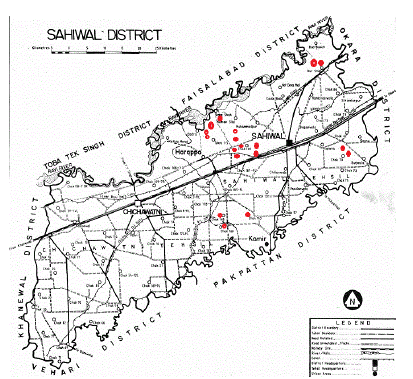
The following areas marked are under the threat of goats abortion in District Sahiwal.

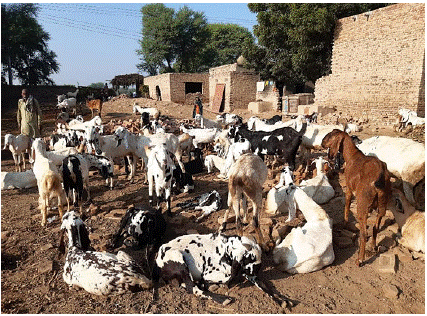
Beetal bread Sahiwal Goat.

Sample collection from goats

Blood Sample Collection From Human

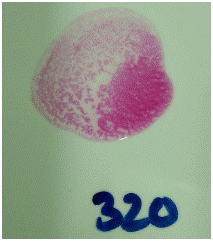

Serum Blood samples of goats
The doctor convinced that air pollutants emitted from the coal power plant are responsible for this. Tajdin, another farmer in the area is facing the same problem. “80 percent of guava trees in my orchard are getting dry due to the coal-fired power plant,” he says. “The ash dumped in the power plant spreads to nearby areas with the wind and settles on guava trees.” Science is clear on the fact that coal is exacerbating climate change which leads to catastrophic weather events such as glacial lake outburst floods, cyclones and sea intrusion. Why then is the Government of Pakistan venturing into coal? Dr Niazi, is an expert on arsenic dynamics in water. He has been investigating the impacts of groundwater abstraction and the rising arsenic levels in Sahiwal, including nearby villages, because of the coal-fired power plant. The doctor and his team collected up to 220 water samples from electric pumps and hand pumps around villages which were close to the power plant. Analysis of the samples showed that arsenic concentrations in 45 percent of the samples were above the World Health Organization’s safe limits in drinking water (10 micrograms per litre). Worse still, 30 percent of the well water samples contained arsenic levels above the Pakistan-EPA safe limit, which is set at 50 micrograms per litre.
Conclusion
The study concluded that a higher prevalence of both Coxiellosis and Brucellosis was present in goats of District Sahiwal. The results also showed the transmission of Brucellosis from goats to the herders challenging public health and require raising adequate awareness and capacity building program to cope up the present scenario.
References
- Gul S, Khan A, Rizvi F, Hussain I. Sero Prevalence of Brucellosis in Food Animals in the Punjab, Pakistan. VJ. 2014; 4: 454-458.
- Saglam A, Sahin M. Coxiella burnetii in samples from cattle herds and sheep flocks in the Kars region of Turkey. Vet Med. 2016; 61: 17-22.
- Abubakar M, Mansoor M, Javed A. Bovine Brucellosis: Old and New Concepts with Pakistan Perspective VJ. 2011; 32: 147-155.
- Gul S, Khan A, Ahmad M, Rizvi F. Shahzad A, Hussain I. Epidemiology of brucellosis at different livestock farms in the Punjab, Pakistan VJ. 2015; 35: 309-314.
- Gul S, Khan A, Ahmad M, Rizvi F. Shahzad A, Hussain I. Sero-prevalence of brucellosis in food animals in the Punjab, Pakistan VJ. 2014.
- Saeed U, Ali S, Khan T, Adawy H, Melzer F, Khan A, et al. Seroepidemiology and the Molecular Detection of Animal Brucellosis in Punjab, Pakistan VJ. 2019; 7: 449.
- Ullah Q, Adawy H, Jamil T, Jamil H, Qureshi ZI, Saqib M, et al. Serological and molecular investigation of Coxiella burnetii in small ruminants and ticks in Punjab, Pakistan. Int J Environ Res Public Health. 2019; 16: 4271.
- Zahid MU, Hussain MH, Saqib M, Neuber H, Abbas G, Khan L, et al. Seroprevalence of Q fever (coxiellosis) in small ruminants of two districts in Punjab, Pakistan. Vector Borne Zoonotic Dis. 2016; 16: 449-54.
- Shabbir M, Akrama S, Hassana Z, Hanif K, Rabbani M, Muhammad J, et al. Evidence of Coxiella burnetii in Punjab Province, Pakistan. Acta Trop. 2016; 163: 61-9.
- Ali S, Ali Q, Abatih E, Ullah M, A, Khan I, et al. Seroprevalence of Brucella abortus among dairy cattle and buffaloes in Pothohar Plateau, Pakistan. Pakistan J Zool. 2013; 45: 1041-1046.